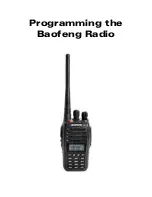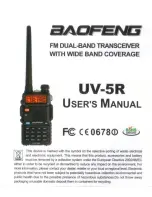
RC11xx(HP)-TM
RC25xx(HP)-TM
RC17xx(HP)-TM
2016 Radiocrafts AS
RC11xx(HP)/25xx(HP)/17xx(HP)-TM Data Sheet rev. 1.48 Page 8 of 86
2016 Tiny Mesh AS
Radiocrafts
Embedded Wireless Solutions
Self-optimizing
The communication path offering the least number of hops and the highest link quality is always
selected as the primary connection for data delivery. A network optimization process runs continuously
as a background task in all Tinymesh™ devices.
In changing environments with changing link quality, Tinymesh™ networks dynamically adapt to find
optimum routing.
Network Addressing
Tinymesh™ networks utilize a flexible addressing scheme with 4 bytes System address (SID) and 4
bytes for unique device addressing (UID).
The four byte System ID identifies a local network in the same way as a PAN address. All devices in a
local mesh must share the same four-byte SID.
Every Gateway, Router, and End Device belonging to a local mesh network must have unique UIDs.
Duplicate UIDs will cause network instability, lost packets and connection issues.
A separate 4-byte Network Address is applied to uniquely distinguish local mesh networks sharing a
common platform in a cloud- or server controlled environment where local mesh networks may be
deployed with similar SID.
The Tinymesh™ Stack supports unique, group and broadcast addressing of individual devices. Routers
and End Devices may be assigned to addressing groups, by entering up to eight different single-byte
group identifier addresses
.
Multiple Gateway Support
Tinymesh™ networks support multiple Gateway devices operating within the same local mesh. In mesh
networks with a single Gateway, the Gateway becomes a critical point for system reliability. In a
Tinymesh™ network, additional Gateways may be added at any point in time to provide redundancy on
the Gateway level.
Adding Gateway devices to a local mesh also improves data throughput and network capacity, as the
additional Gateway devices will automatically load share the upstream data traffic from for instance a
large data collection or sensor network.
Systems with multiple gateways must be controlled by a common server or cloud platform, such as
Tinymesh™ Cloud Services. Data originating from Router- or End Devices will automatically be routed
through the mesh to the Gateway device that provides the least number of hops and the best signal
strength. If two or more Gateway devices offer the same number of hops and equally good signal
strength, for instance if the two Gateway devices are located near to each other, the packet will be
delivered to the Gateway device that is currently available. The server platform will use the device UID
to identify the packet origin, and the packet number contained in the packet header to verify uniqueness.
Commands (downstream data traffic) in multiple Gateway systems should as a rule be entered to all
Gateway devices, to ensure reliable delivery.
Systems where the Gateway devices are located close by each other, offer an exception to this rule.
This will be systems where two or more Gateway devices provide redundancy and added throughput,
and where the distance between the individual Gateway devices is less than the distance to the closest
Router device. A single Gateway may be selected to dispatch commands in such configurations.
Ad Hoc Networks and Hand Held Gateway Devices
Local mesh systems that are created ‘ad hoc’ by turning on a portable Gateway device such as a
portable CMRI used for data collection in automated metering systems will be formed as a web with the
portable Gateway in the centre of the mesh network.
Because there is no fixed rule to where a Gateway device is located, or when the mesh is created, there
needs to be mechanisms in place to ensure there is only one Gateway device downloading from the
mesh at a given time.
A configurable parameter in a Tinymesh™ Gateway device provides a mechanism for the Gateway to
detect if a network is already present when the portable Gateway is powered up. Depending on the
device configuration, the Gateway device will either refuse connection, provide an alert, or ignore the









































